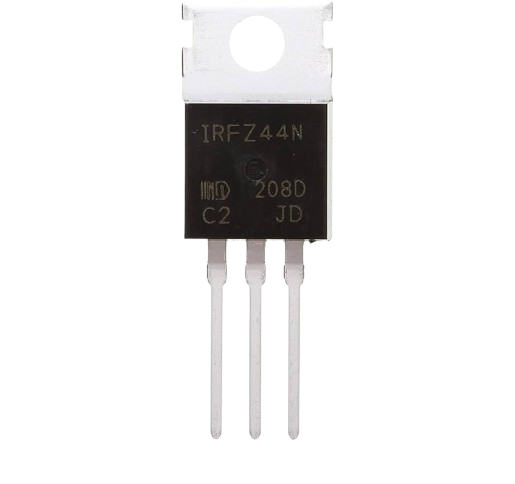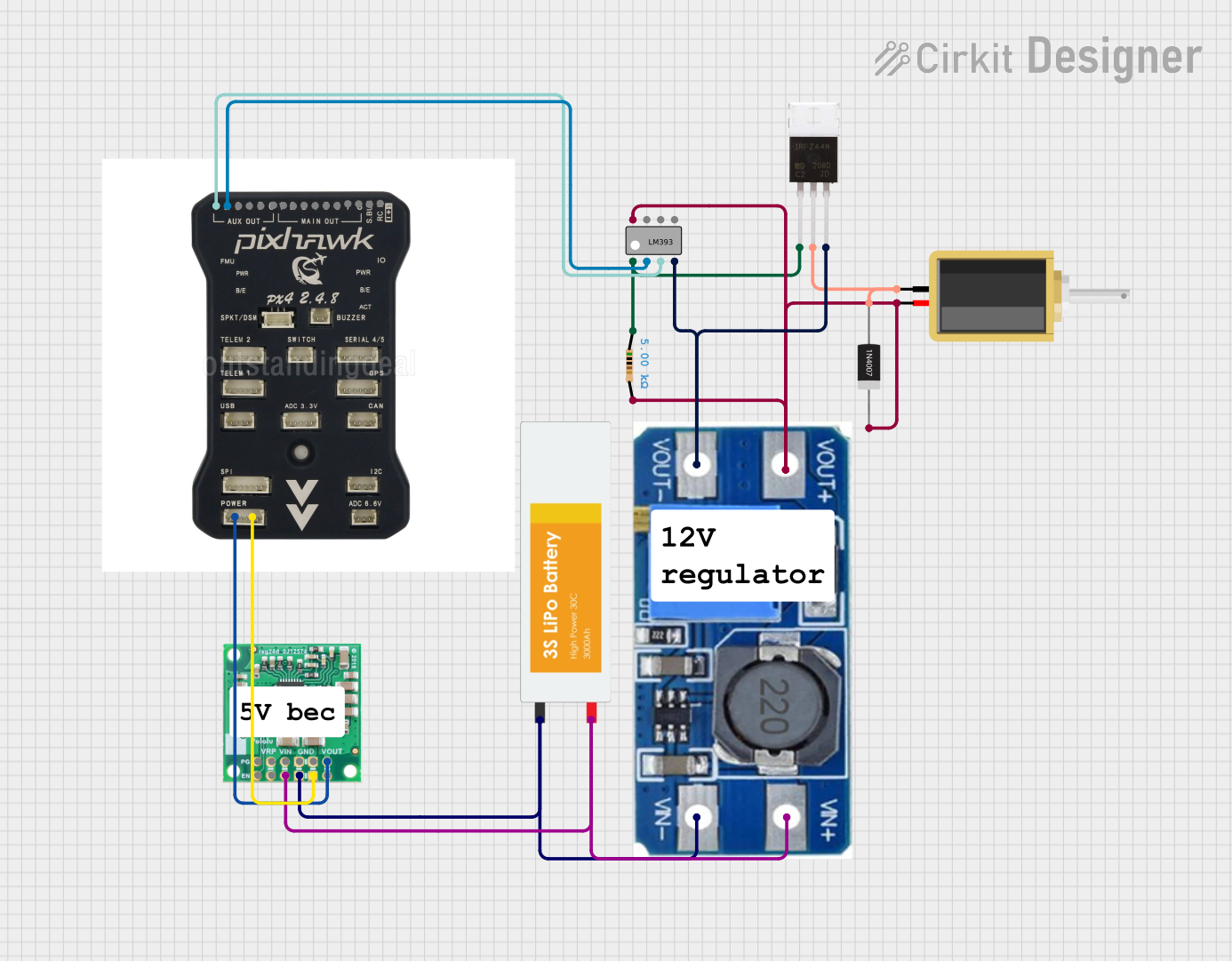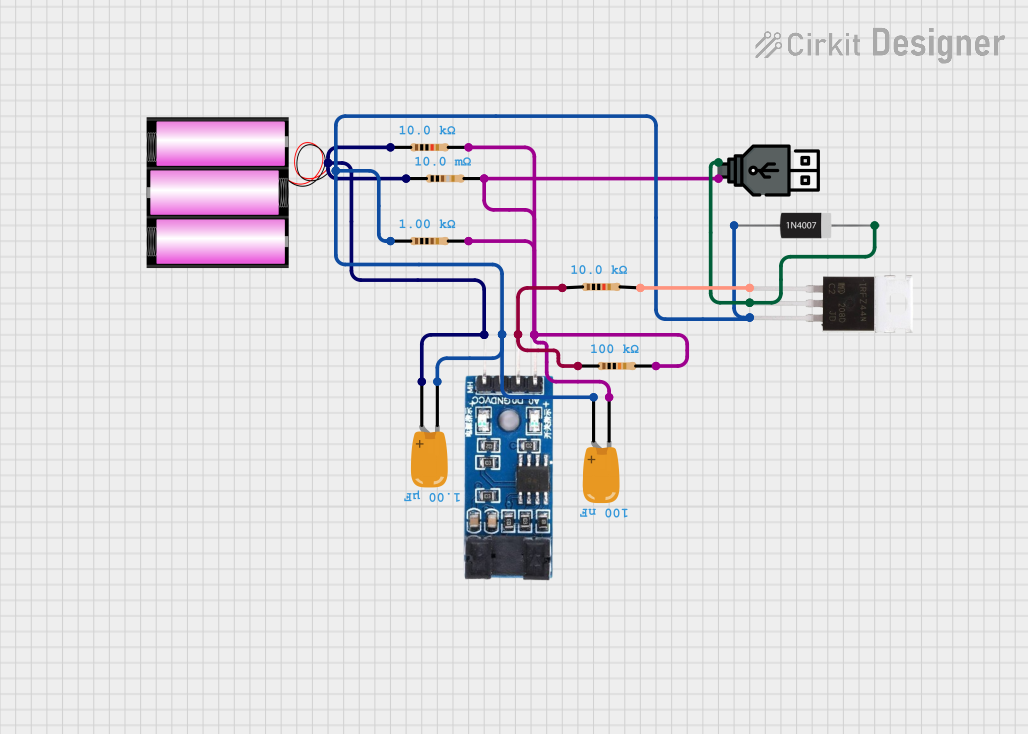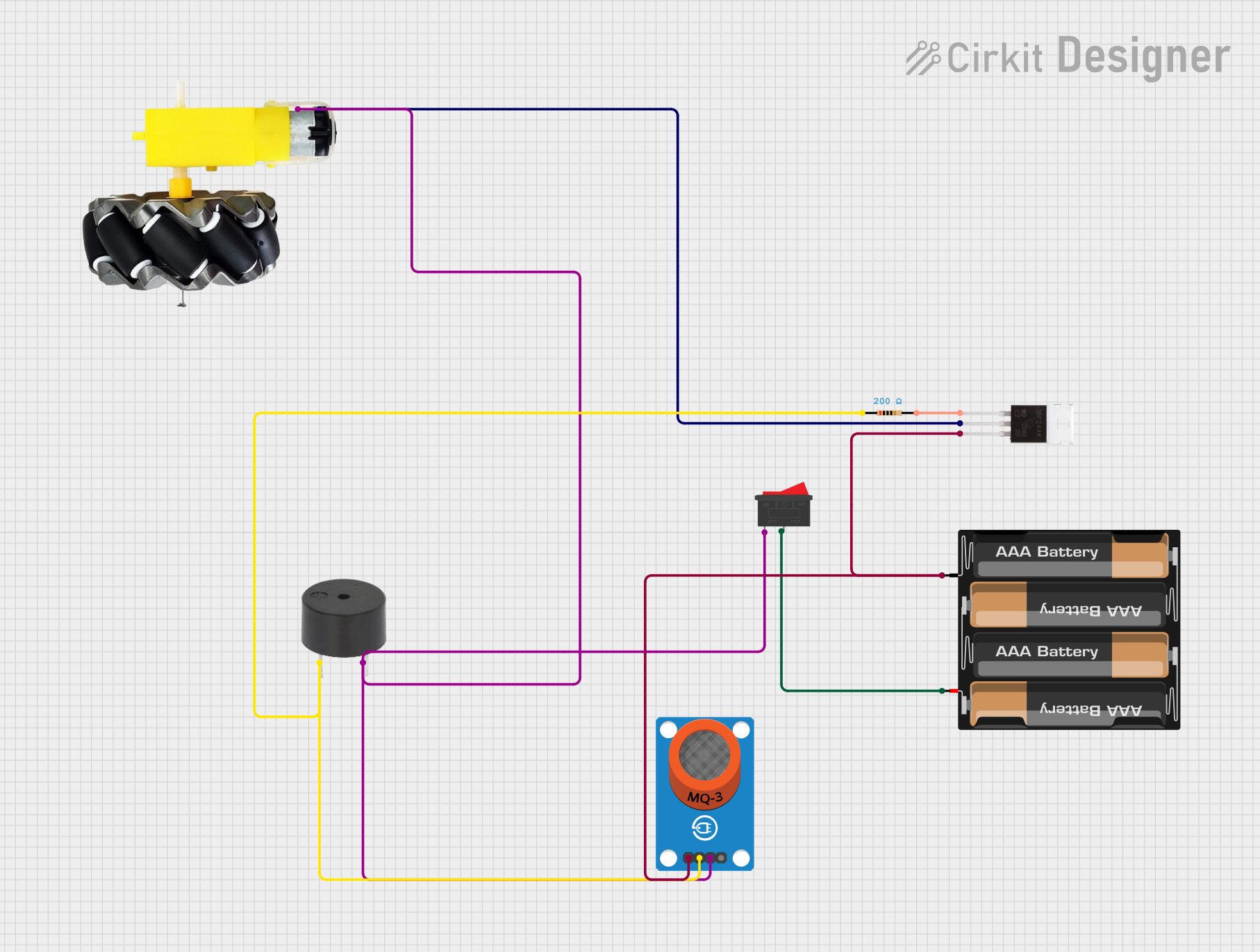
How to Use IRFZ44N: Examples, Pinouts, and Specs

 Design with IRFZ44N in Cirkit Designer
Design with IRFZ44N in Cirkit DesignerIntroduction
The IRFZ44N is an N-channel MOSFET (Metal-Oxide-Semiconductor Field-Effect Transistor) designed for high-speed switching applications. It is widely used in circuits requiring efficient power management, motor control, and high-current switching. With its low on-resistance (RDS(on)), high current capacity, and ability to handle voltages up to 55V, the IRFZ44N is a versatile and reliable component for various electronic projects.
Explore Projects Built with IRFZ44N

 Open Project in Cirkit Designer
Open Project in Cirkit Designer
 Open Project in Cirkit Designer
Open Project in Cirkit Designer
 Open Project in Cirkit Designer
Open Project in Cirkit Designer
 Open Project in Cirkit Designer
Open Project in Cirkit DesignerExplore Projects Built with IRFZ44N

 Open Project in Cirkit Designer
Open Project in Cirkit Designer
 Open Project in Cirkit Designer
Open Project in Cirkit Designer
 Open Project in Cirkit Designer
Open Project in Cirkit Designer
 Open Project in Cirkit Designer
Open Project in Cirkit DesignerCommon Applications
- DC motor control in robotics and automation
- Switching power supplies and converters
- LED dimming and lighting control
- Battery management systems
- High-current switching circuits
Technical Specifications
Key Specifications
| Parameter | Value |
|---|---|
| Type | N-Channel MOSFET |
| Maximum Drain-Source Voltage (VDS) | 55V |
| Maximum Gate-Source Voltage (VGS) | ±20V |
| Continuous Drain Current (ID) | 49A (at 25°C) |
| Pulsed Drain Current (IDM) | 160A |
| Power Dissipation (PD) | 94W |
| On-Resistance (RDS(on)) | 17.5 mΩ (at VGS = 10V) |
| Gate Threshold Voltage (VGS(th)) | 2.0V - 4.0V |
| Operating Temperature Range | -55°C to +175°C |
| Package Type | TO-220 |
Pin Configuration
The IRFZ44N comes in a TO-220 package with three pins. The pinout is as follows:
| Pin Number | Name | Description |
|---|---|---|
| 1 | Gate | Controls the MOSFET switching state |
| 2 | Drain | Current flows into this pin |
| 3 | Source | Current flows out of this pin |
Usage Instructions
How to Use the IRFZ44N in a Circuit
- Gate Control: Apply a voltage to the Gate (Pin 1) to control the MOSFET. A voltage of 10V or higher is recommended for full switching performance.
- Drain-Source Connection: Connect the load (e.g., motor, LED) between the Drain (Pin 2) and the positive supply voltage. The Source (Pin 3) should be connected to ground.
- Gate Resistor: Use a resistor (typically 10Ω to 100Ω) between the Gate and the control signal to limit inrush current and prevent damage to the MOSFET.
- Flyback Diode: For inductive loads like motors, add a flyback diode across the load to protect the MOSFET from voltage spikes.
Important Considerations
- Ensure the Gate-Source voltage does not exceed ±20V to avoid damaging the MOSFET.
- Use a heatsink if the MOSFET is expected to dissipate significant power.
- Avoid exceeding the maximum current and voltage ratings to prevent failure.
Example: Controlling a DC Motor with Arduino UNO
Below is an example of how to use the IRFZ44N to control a DC motor with an Arduino UNO:
Circuit Connections
- Gate (Pin 1): Connect to an Arduino digital pin (e.g., D9) through a 100Ω resistor.
- Drain (Pin 2): Connect to one terminal of the motor.
- Source (Pin 3): Connect to ground.
- Motor: Connect the other terminal to the positive supply voltage.
- Flyback Diode: Place a diode (e.g., 1N4007) across the motor terminals, with the cathode connected to the positive supply.
Arduino Code
// Define the pin connected to the MOSFET Gate
const int motorPin = 9;
void setup() {
pinMode(motorPin, OUTPUT); // Set the motor pin as an output
}
void loop() {
analogWrite(motorPin, 128); // Set motor speed to 50% (PWM value: 128)
delay(5000); // Run motor for 5 seconds
analogWrite(motorPin, 0); // Turn off the motor
delay(5000); // Wait for 5 seconds
}
Troubleshooting and FAQs
Common Issues and Solutions
MOSFET Overheating
- Cause: Exceeding current or power dissipation limits.
- Solution: Use a heatsink or fan for cooling. Ensure the load current is within the MOSFET's rated limits.
MOSFET Not Switching Properly
- Cause: Insufficient Gate voltage.
- Solution: Ensure the Gate voltage is at least 10V for full switching. If using a microcontroller, consider a Gate driver circuit.
Voltage Spikes Damaging the MOSFET
- Cause: Inductive loads generating back EMF.
- Solution: Add a flyback diode across the load to suppress voltage spikes.
MOSFET Always On or Off
- Cause: Gate signal not properly connected or damaged MOSFET.
- Solution: Check the Gate connection and replace the MOSFET if necessary.
FAQs
Q: Can the IRFZ44N be driven directly by a 5V microcontroller like Arduino?
A: While the IRFZ44N can operate with a Gate voltage as low as 5V, it may not fully turn on, leading to higher on-resistance and heat generation. For optimal performance, use a Gate driver or a logic-level MOSFET.
Q: What is the purpose of the Gate resistor?
A: The Gate resistor limits the inrush current to the Gate during switching, protecting both the MOSFET and the control circuit.
Q: Can I use the IRFZ44N for AC applications?
A: The IRFZ44N is primarily designed for DC applications. For AC switching, consider using a TRIAC or an IGBT.
Q: How do I calculate the required heatsink size?
A: Use the formula:
P = I^2 * R_DS(on)
where P is the power dissipation. Select a heatsink with a thermal resistance low enough to keep the MOSFET within its safe operating temperature range.